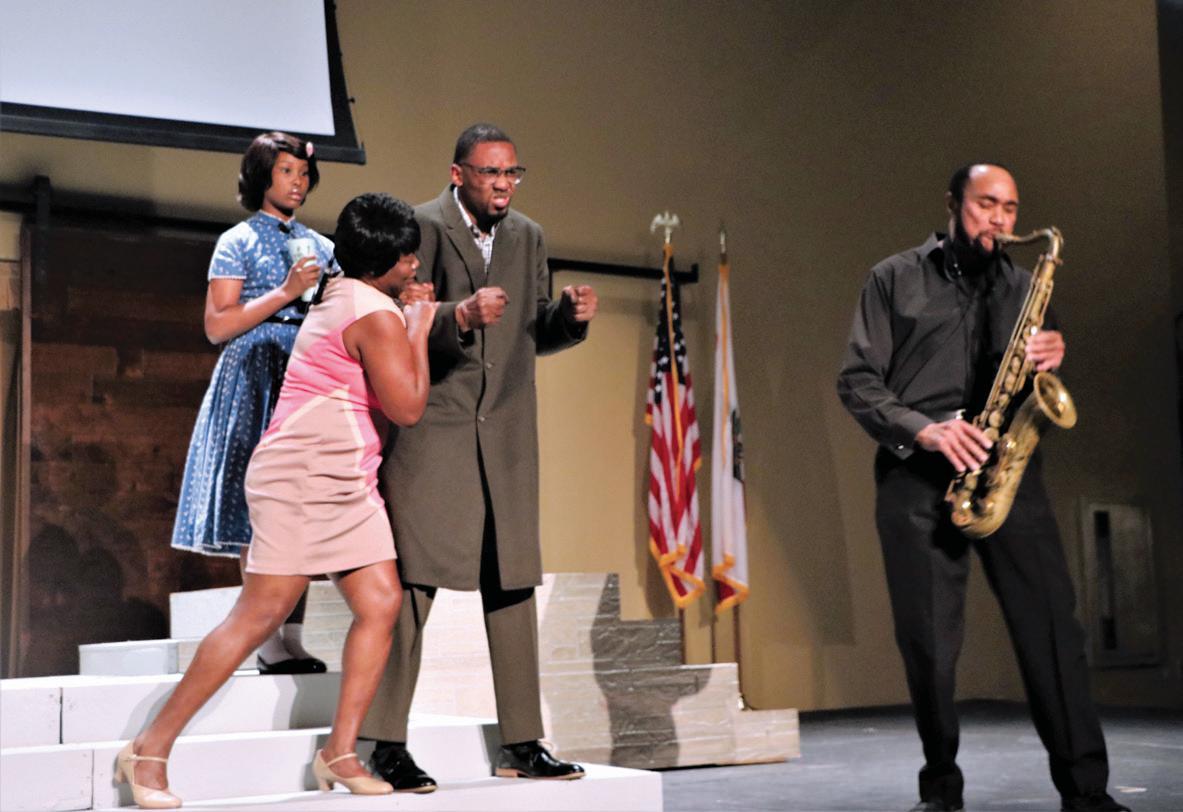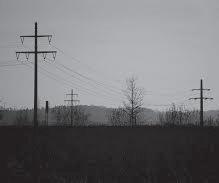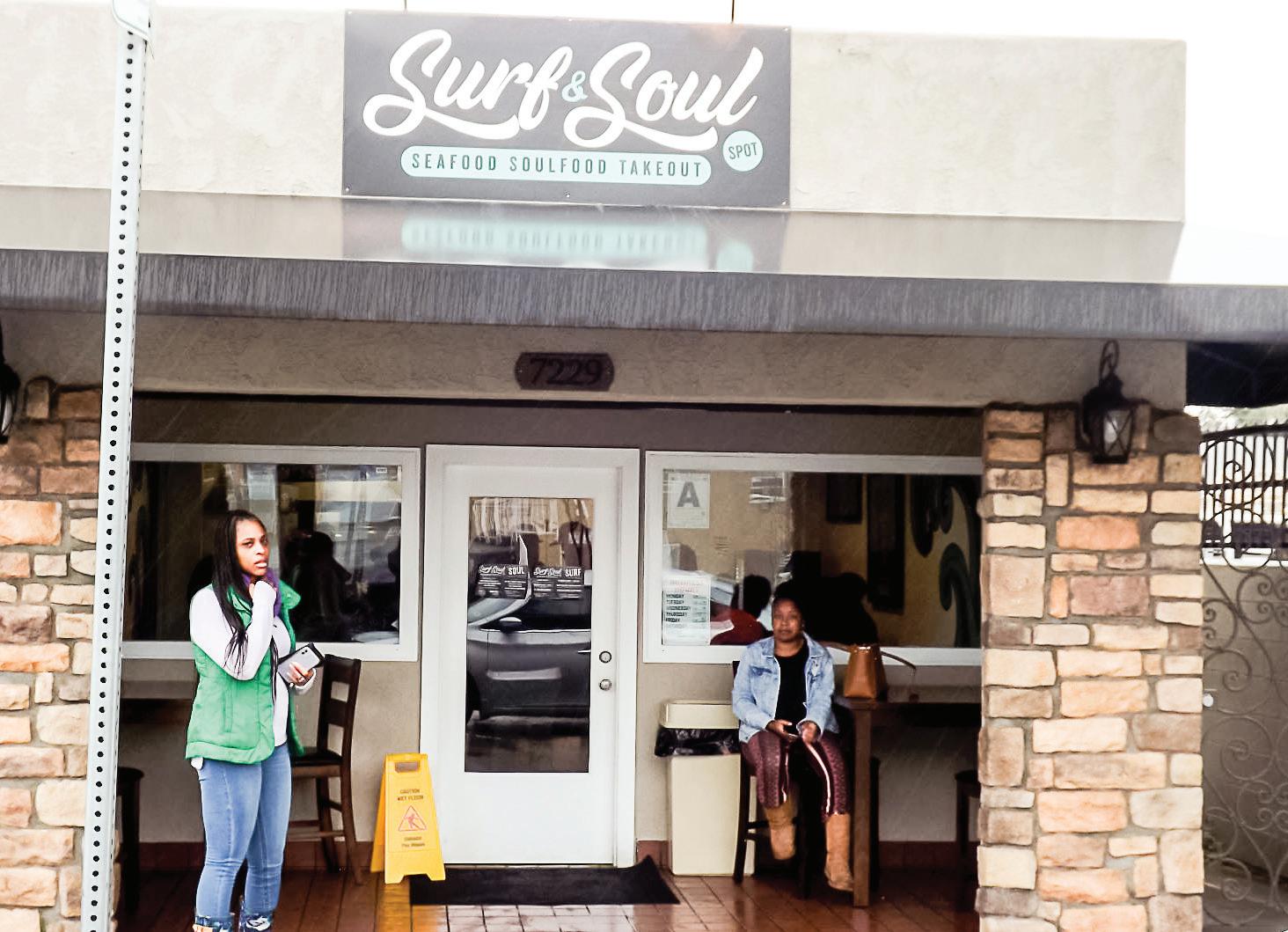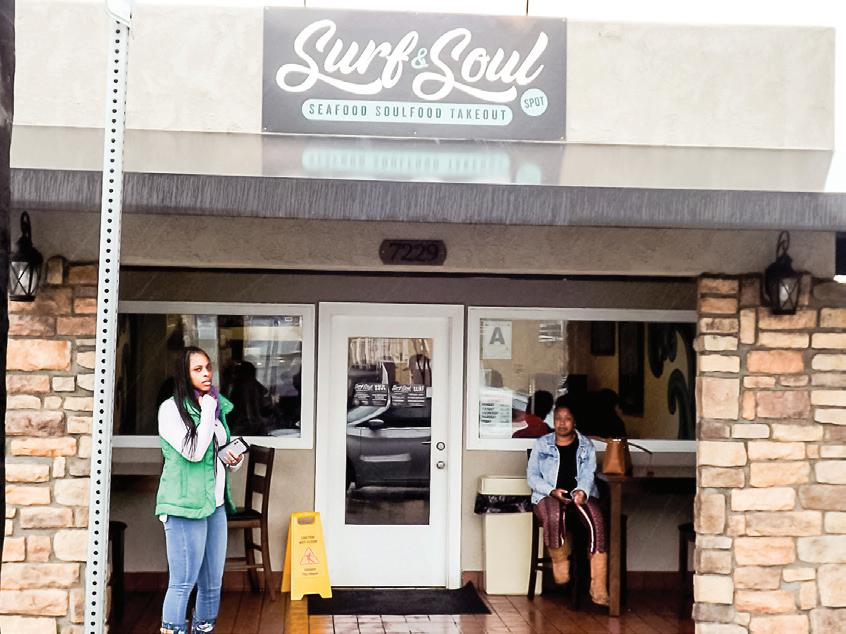
11 minute read
Vodka Kills the Virus: Most vodka brands are only 40
Armstead: continued from page 1
selection process and called it corrupt, in the midst of the confirmation hearing for David Bejarano who got the job. She also filed a lawsuit against the Mayor at the time which was later dropped.
When she became Assistant Chief in 1992, there were 146 women as sworn officers with the San Diego Police Department. When she retired in 2005, there were 305 women in such positions. Former Police Chief William Lansdowne said of Armstead, “She has broken more glass ceilings in law enforcement than anybody I have ever known.” Born in North Carolina, Roulette came to California at the age of 14. In an interview given some years ago, she said: “We grew up in the backwoods and had no opportunity. We were very poor. I remember we all piled into a 59 Ford and came West.” The family settled in San Diego.
She attended Gompers Jr. High and Lincoln High School when there were racial tensions in the community. She graduated from San Diego State University and years later got a Masters Degree in Criminal Justice Administration.
Her becoming a police officer was almost accidental. While applying for her first job after graduation with the Department of Social Services, a man in the City Personnel Department suggested that she should apply to become a police officer. She applied, got accepted and, as she said, “I have been in the same job for 31 years.”
Rulette Armstead never left the San Diego community in which she was raised even though in later years, she lived in Poway. After retirement, she embraced her second love, teaching. She taught Criminal Justice at Southwestern College and at San Diego State University.
She was nationally recognized and appreciated for her work in law enforcement. She cared deeply for those who followed her with the San Diego Police Department as evidenced by a moving speech she gave last November before the Black Police Officer Association (BPOA). She will be greatly missed.
Alert: continued from page 1
getting medical attention, picking up prescriptions or to go to work.
“We all have a role to play to keep the virus from spreading in our communities,” said Wilma Wooten, M.D., M.P.H., County public health officer. “People should not be out and about, unless it’s absolutely necessary and people are not in a group.”
Wooten issued the new guidance March 16 to try to flatten the curve of the pandemic and prevent many people from getting sick at the same time.
The goal is to practice social distancing to slow the spread of the pandemic so that sick people don’t overwhelm the healthcare system. Should that occur, there might not be enough hospital beds or mechanical respirators for everyone who needs them.
“People should be six feet apart when out on the street conducting essential activities,” Wooten said. “Social distancing is an effective tool to slow the spread of pandemics.”
Lockdown: continued from page 1
It’s unclear how the government will help coordinate the delivery of meals to an estimated 5.7 million California seniors and millions of other Californians who suffer from heart, respiratory, kidney and immune system disorders.
“We are doing so with our eyes wide open at the magnitude of what that means and the need to provide wraparound services to support our seniors in need of medical supplies, in need of meals and the like,” Newsom said Sunday at a press conference.
The traditional method of delivering food to seniors is through “access points” like a senior center, said Los Angeles Regional Food Bank Chief Executive Officer Michael Flood. But dozens of seniors congregating in a small space is no longer feasible, so other options will have to be considered.
Newsom emphasized multiple times on Sunday that the state will partner with private industry to respond to the pandemic, whether that means feeding children with free or reduced-price lunches from shuttered school districts or seniors who are isolating themselves. Flood said the LA Regional Food Bank envisions something similar to feed the 28,000 seniors it serves each month.
“We’ve never had this type of discussion, how we can possibly leverage [private industry] logistics to deliver for a nonprofit,” Flood said. “We‘re going to have to figure this out.”
Here are a half-dozen questions raised by the governor’s announcement:
How many people are we talking about here?
California is getting grayer. Newsom said his self-isolation guidance would apply to the approximate 5.3 million seniors age 65 or older who live in the state. However, according to 2019 Census numbers, that number may be closer to 5.7 million.
And it’s not just the elderly who are being advised to stay home. So are people with underlying chronic health conditions. That means people with heart and respiratory diseases, diabetics and asthmatics. That’s a lot of people.
In California, about one in three adults— more than 8 million people — live with cardiovascular disease, which includes heart failure, artery disease, hypertension, strokes and other disorders, according to 2016 state data. Also, about 2.5 million adults in the state have been diagnosed with diabetes, while 2.3 million adults have asthma and another estimated 1.5 million have chronic obstructive pulmonary disease.
Why the elderly?
“We are prioritizing their safety because of their unique vulnerabilities to this virus,” Newsom said.
Health officials say that older adults, as well as people with compromised immune systems and those with underlying chronic medical conditions, seem to be at higher risk of developing serious, life-threatening complications from the coronavirus.
Out of California’s 335 positive cases as of Sunday, 116 were among people 65 and older.
In China, where the virus was first detected, the majority of deaths have been among older adults, who tend to have weaker immune systems and have a higher rate of chronic disease. While the mortality rate for COVID-19 remains low — about 2.3 percent — it increases with age or when combined with a chronic illness.
For example, the COVID-19 mortality rate in China for people with heart disease jumped to 10.7 percent, and to 7.3 percent for patients with diabetes. The mortality rate for those with respiratory illnesses was 6.3 percent.
Similarly in Italy, a national analysis earlier this month found that the average age of 105 people who died in relation to COVID-19 was 81. Most of those patients were men and twothirds of them had three or more existing conditions.
So, what does self-isolation mean anyway? Can they go to the grocery store or pharmacy?
The idea of Newsom’s plan is to keep people who may be sick away from seniors and people with compromised immune systems or weakened hearts, kidneys and lungs.
Newsom did not give any specific advice, but his plan likely would mean people staying home from work and other public places as much as possible, and not meeting with friends, even at home.
Guidelines from the Centers for Disease Control and Prevention say people should restrict activities outside their homes except for seeking medical care. On Sunday, the CDC advised that all gatherings of 50 people or more be cancelled for the next eight weeks, from weddings to sporting events.
In New Zealand, self-isolation protocol allows for others to drop off food and supplies to those in isolation.
Until recently, only people who were infected or believed to be infected by the coronavirus but didn’t require hospitalization had been asked to home isolate for 14 days.
Newsom recognized that asking millions of seniors to stay home was bound to create anxiety.
“We are doing so with our eyes wide open at the magnitude of what that means,” he said. He added that his team is working on services to help these seniors with food and medication.
If these people can’t go to the grocery store, how are they going to eat?
Good question. Newsom said that the state has “been working for days” to answer this question, but he did not provide specifics.
Newsom did allude to “strike teams that will support the social safety net and those services for our seniors” run by Mark S. Ghilarducci, director of the California Governor’s Office of Emergency Services.
“What is really important is to understand what a massive logistics operation it would be to take a formerly pretty self-sustaining group of people and expand an already stretched safety net to cover that group of people too,” said Ashley McCumber, executive director of Meals on Wheels San Francisco, which serves hot meals to 3,600 people who are over 60 or disabled each week.
McCumber said that the need for home-delivered boxes of groceries will grow dramatically, as will the need for hot meals for those who rely on senior day centers and other facilities because they can’t prepare their own meals at home.
Food banks across California are already facing shortages of volunteers and closures of their distributions sites due to coronavirus concerns.
Partnering with private home delivery companies could bridge the gap. McCumber said the food delivery company DoorDash called last week to explore how it could support Meals on Wheels San Francisco.
Poorer: continued from page 1
Among other key findings, the median household income for African Americans grew by 13.4 percent, roughly the same rate of 13.7 percent for Americans as a whole. But, it remains 33 percent below the national average.
The study revealed that the median household income for Blacks in 2018 was $40,155 — more than $20,000 less than the $60,293 median household income for Americans as a whole.
The median individual earnings for African American workers — which were already 16 percent lower than the median personal earnings for American workers as a whole — grew by 7.1 percent, compared with 9.5 percent for workers as a whole.
That means that the earnings gap between African Americans and Americans as a whole increased by 11.2 percent between 2013 and 2018.
And, although household income increased, the income gap between Black Americans and Americans as a whole remained steady at 33 percent. In comparison, the wage gap between Blacks and Americans as a whole increased 11 percent from 2013 to 2018.
While homeownership rates fell for Americans overall between 2013 and 2018, Blacks saw a more significant drop of 4.7 percent, compared with 1.7 percent for Americans as a whole.
Study authors concluded that there are four metro areas in which Black homeowners have closed the gap within 20 percent – all of them are in the South, specifically in the Carolinas.
Minnesota, Minn., has the most substantial gap, at 64 percent.
What McFadden said she found most striking is the advances made in education by African Americans, which didn’t translate into more economic prosperity in the Black community.
“In almost every metric we examined, African Americans realized slower growth than the country as a whole, but they did outpace their peers when it comes to higher education,” McFadden noted.
The study revealed that African Americans are closing the higher education gap as the percentage of Black people with a bachelor’s degree rose from 18.6 percent in 2013 to 21.1 percent in 2018 – an increase of 13.5 percent.
The increase for Americans as a whole was just 9.4 percent – from 28.8 percent in 2013 to 31.5 percent in 2018, Lending Tree researchers found.
Black residents of Riverside, Calif., Pine Bluff, Ark. and San Antonio have closed the gap with the whole of their communities when it comes to earning higher education degrees.
“The education findings to me really were the most striking, the most disheartening and frightening,” McFadden lamented.
“You know, we’d really hope that education would create a more even playing field and the fact that African Americans are exceeding the growth rate in higher education degrees shows a lot of things. It shows achievement, and it shows that families are directing their children, and it shows a lot of groundswell for entering the professional working world.”
She continued:
“The fact that other economic indicators aren’t keeping pace with that is really startling. And, I don’t have a good reason for why that is. We know about workplace bias, and we know about resume bias.”
McFadden opined that student loans are more of a hindrance to African Americans than others. “If you’re less likely to come from a family that has the kind of wealth that can help support your schooling, it’s obviously going to be a problem in terms of accumulating debt,” she stated.
For those attending historically black colleges and universities (HBCUs), McFadden believes the lack of funding at those schools contributes to high student debt.
“HBCUs just don’t have the endowments that the most prestigious schools have. We have reports that show where parents are borrowing to send their kids to school, and those debts are harder to pay,” McFadden added.
The comprehensive study did reveal places where African Americans are faring well.
Researchers found that the Cape Coral-Ft. Myers, Fla., metro area is leading the country in economic advancement for African Americans. The population has grown by 17 percent, median household income is up by 26 percent, and individual earnings are up by 22 percent.
Homeownership is up by 50 percent in Cape Coral-Ft. Myers, and unemployment is down by 66 percent.
Also, 25 percent more Black residents in the Cape Coral-Ft. Myers area is attaining higher education degrees than they were in 2013.
Grand Rapids, Mich., and Minneapolis-St. Paul, Minn., came in second and third place, respectively. The five locations with the least overall gains for African Americans are all in the South – Houma-Thibodaux, La., Shreveport-Bossier City, La., Hammond, La., Goldsboro, N.C., and Hilton Head Island-Beaufort, S.C.
When asked what’s the biggest takeaway from the study, McFadden called most of the details “depressing for African Americans.”
To view the full report go to: https://www.lendingtree. com/personal/black-americans-see-less-economic-prosperity-study/










